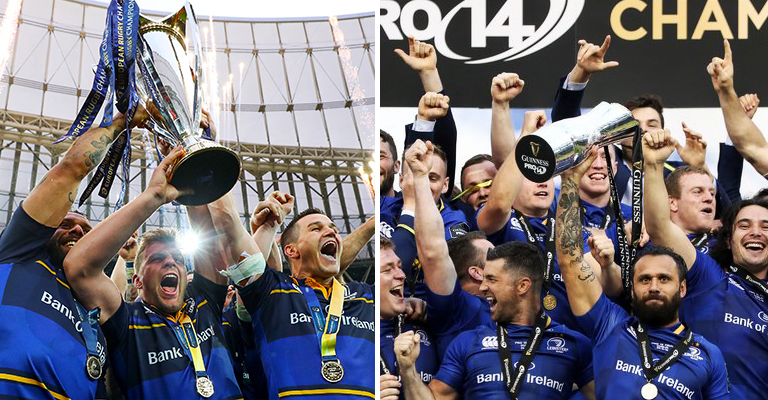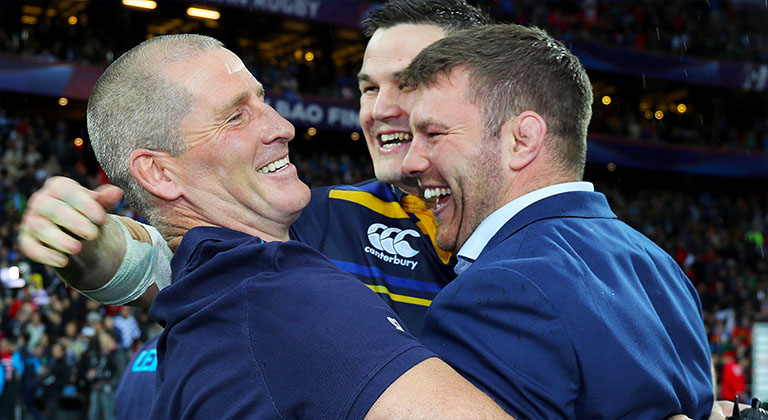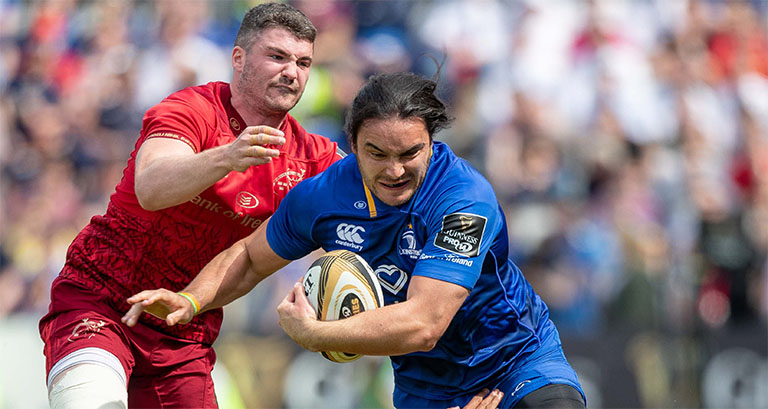Analysing The Reasons For Leinster’s Success This Season
Stephen Lewis
Latest posts by Stephen Lewis (see all)
- Top Five Performances Of The 2010s: England - June 23, 2020
- Picking England’s 31-Man Squad For The World Cup - May 23, 2019
- Winners & Losers From Week One Of The Guinness Six Nations - February 5, 2019
The best in Europe.
It hasn’t been a bad year for Irish rugby. Ireland achieved the Grand Slam – becoming the world number two team in the process – and Leinster became the first team to win both the PRO14 and European Champions Cup in the same season.
Leinster’s incredible rise to the top has seen them become the very best club side Europe has to offer, even if Welsh writer Stephen Jones doesn’t think so. But what are the reasons for Leinster’s success, and can their dominance continue?
Let us begin with the appointment of Stuart Lancaster. Leo Cullen raised a few eyebrows when appointing the former England Head Coach to his backroom staff in 2016, but the appointment has clearly paid dividends. Lancaster has, to steal a phrase from Dan Leavy, “revolutionised” the boys in blue. The results are clear to see, with Leinster working tirelessly in defence and dominating the set piece on regular occasions.
The 48-year-old has admitted that he focused too much on managing rather than coaching during his time at England, but that has completely changed now that he is part of the backroom staff, and not in the limelight. Leinster will be delighted that he has no plans on leaving the side any time soon; he truly has been a key figure in Leinster’s rise to the top.
It is not just defence Leinster have excelled at – their style of attacking play is ruthless. In the PRO14 final against Scarlets, Leinster finished with 59% possession, despite kicking the ball from hand 22 times. This can largely be attributed to the game management of Johnny Sexton; his kicking from hand has caused nightmares for the opposition, and the quality of the chasing from the Jordan Larmour, Rob Kearney and James Lowe often means that players often don’t have the time to prepare to deal with Sexton’s aerial bombs.
Pressure is also a big aspect of Leinster’s game; they build phases patiently within the opponent’s half and stretch the defence as hard as possible. They very rarely leave the opponent’s half without scoring any points, whether it be a penalty or a try. This relentless style of play has seen them defeat brilliant teams such as Saracens, Racing 92 and, as mentioned, Scarlets. Ireland played a very similar style of rugby in their Grand Slam triumph this year, and, given that 13 of the 23 that defeated England were Leinster men – it’s easy to see why.
This brings us on to player management and strength in depth. Leinster used 56 players throughout the PRO14 campaign, the second highest number of players used in the entire league. A majority of them were introduced following both the Lions tour and following the Six Nation. In fact, Ireland only included seven players in the first weekend after the Six Nations from their matchday 23 that defeated England.
The central contract system that Ireland have in place has allowed Leinster to boost the depth and quality of their squad (just look at the rise of James Ryan as an example). By resting a number of Ireland’s key players, Leinster have been able to give valuable game time to those who would not be playing otherwise, resulting in less of a dent in the team when players are injured. It is no wonder that a number of Leinster stars are also first and second choice for the national team- Cian Healey, Jack McGrath, Tadgh Furlong, Andrew Porter, Johnny Sexton, Joey Carbery and so on. Their strength in depth could even be their undoing, with Joey Carbery pressured to transfer clubs by Irish management.
Leinster’s rise has been incredible this year. It remains to be seen if they can replicate this dominance next season, but it will certainly take a world class team to stop them.





